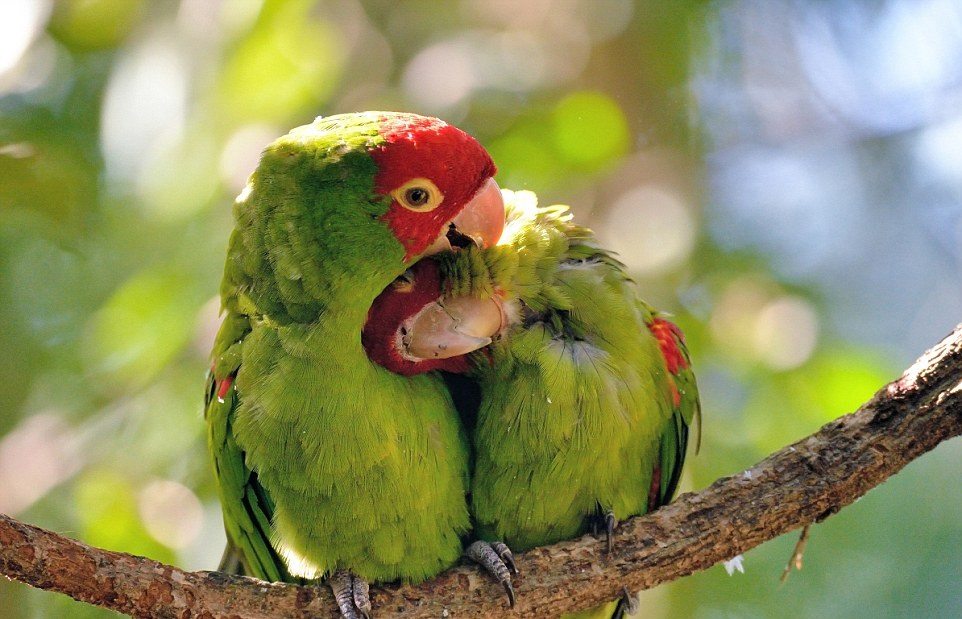Lories and lorikeets have a body part that is unique among parrots: a brush-like tongue! Instead of eating mostly nuts and seeds like other parrots, lories and lorikeets dine on flowers, pollen, and nectar. Because of their diet, lories and lorikeets have a weak gizzard and crop compared to other parrots. Their beak is perfect for crushing flowers, and their special tongue mops up the nectar.
The tongue can also gather pollen particles and pack them into easy-to-eat bundles. These birds even use their strong beak and four-toed feet to perform acrobatics! They climb around on the branches and hang upside down to get to all the flowers on a tree.

As social birds, lories and lorikeets usually travel from tree to tree in large, squawking flocks in search of flowers and nectar, chattering excitedly as they feed. Once safely back to their home trees from their feeding grounds, the little birds are generally quiet, unless a predator is spotted and an alarm call is made.
Many lory and lorikeet species spend time grooming a partner during rest periods, cleaning those important and hard-to-reach feathers.
Like many parrots, lories and lorikeets usually stay with one partner and may breed at any time of year, though in southern Australia, the breeding season is between August and January.















